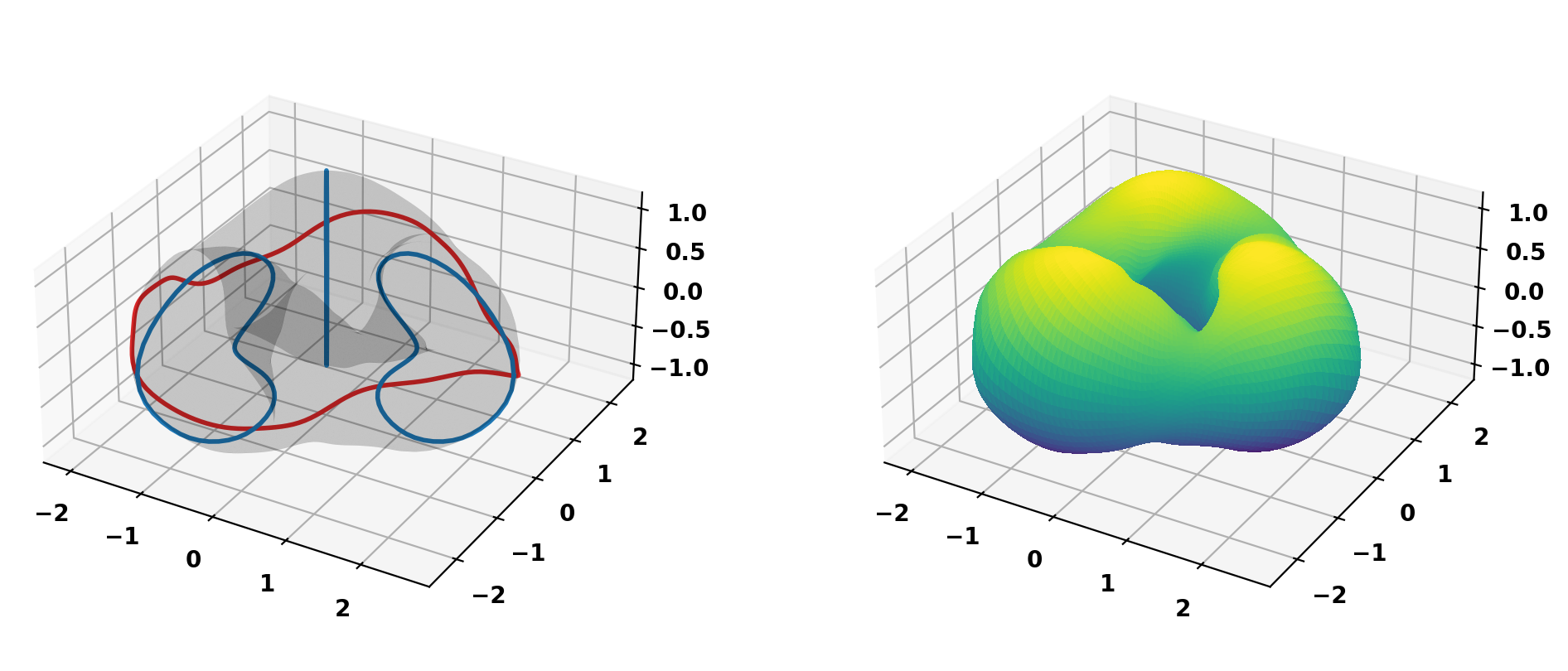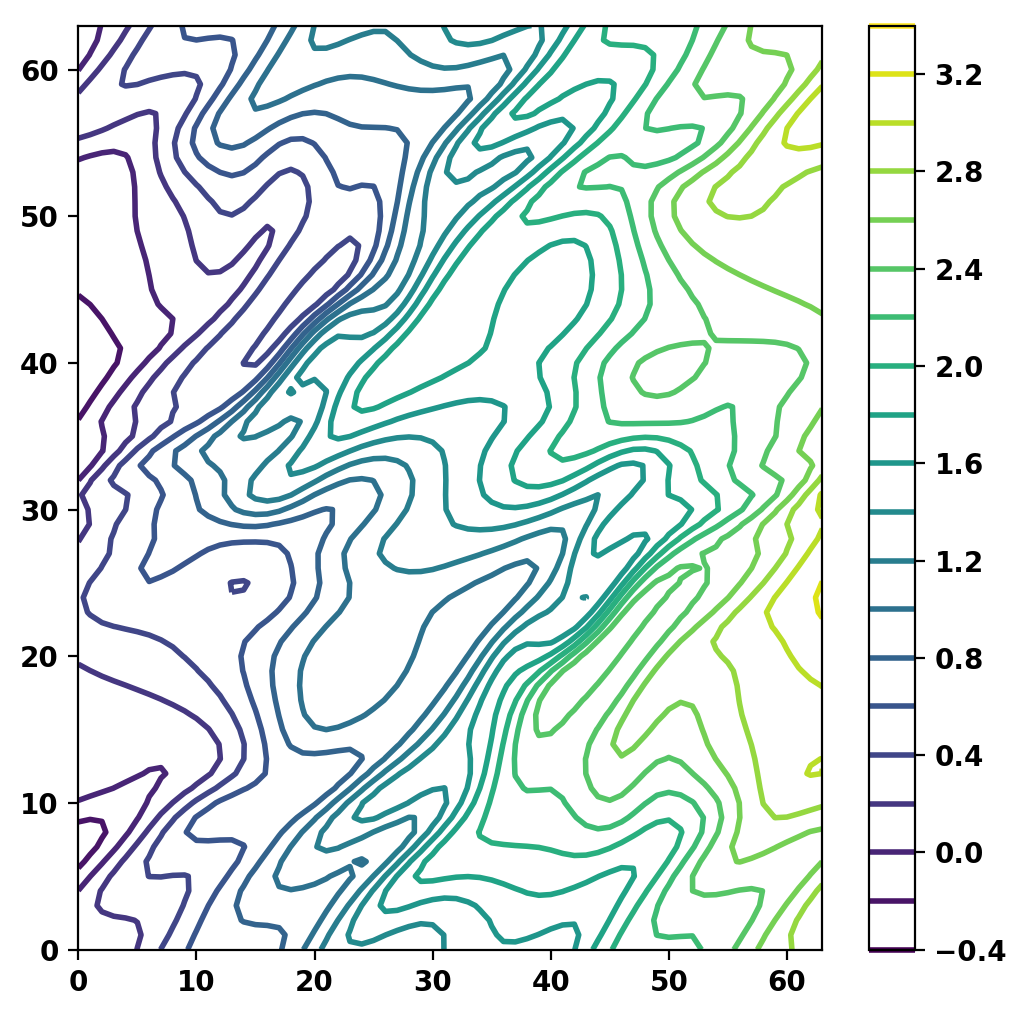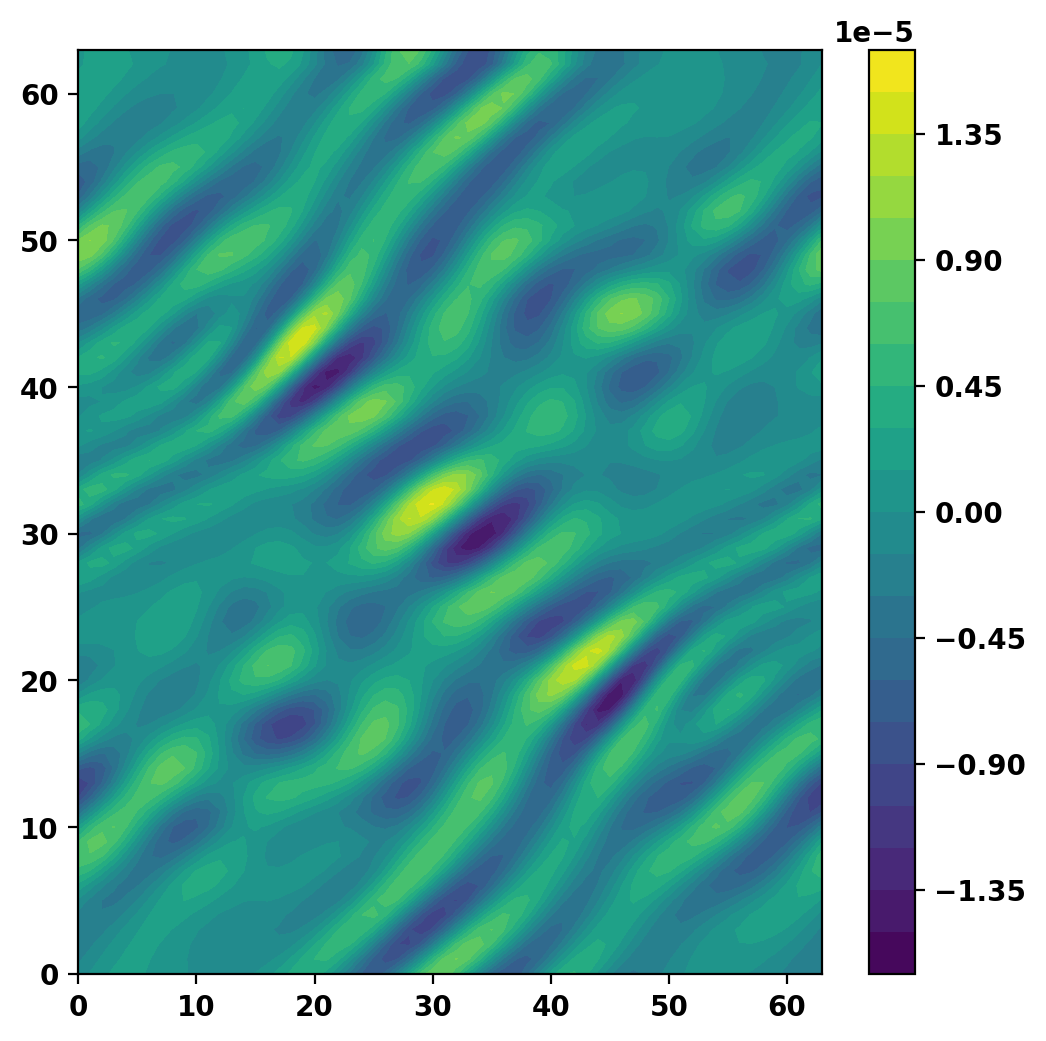In this example we demonstrate how to compute a current potential on one surface that minimizes the error of the normal magnetic field on another. This is relevant to stellarator optimization when the normal field is minimized on a desired plasma surface and the current potential lies on a so-called winding surface here coils will be initialized for further optimization.
- Note
- Running this example requires the h5py python package, which is installable using
pipor other standard methods.
Load ThinCurr library
To load the ThinCurr python module we need to tell python where to the module is located. This can be done either through the PYTHONPATH environment variable or within a script using sys.path.append() as below, where we look for the environement variable OFT_ROOTPATH to provide the path to where the OpenFUSIONToolkit is installed (/Applications/OFT for binaries on macOS).
Generate mesh and ThinCurr input for coil and plasma surfaces for NCSX
First we create ThinCurr models for the winding and plasma surfaces using a REGCOIL definition of the NCSX stellarator using build_regcoil_grid(). This subroutine builds a uniform grid over one field period, which can then be used by build_periodic_mesh() to build a mesh from the resulting grid. The result is a ThinCurr model, including periodicity mapping information (r_map).
We can now create ThinCurr models for the winding and plasma surfaces using a REGCOIL definition of the NCSX stellarator using build_regcoil_grid() and ThinCurr_periodic_toroid, which provides functionality for working with toroidally periodic meshes. The result are ThinCurr_periodic_toroid objects for the plasma (plasma_grid) and winding surface (coil_grid).
Plot resulting winding surface mesh and save to file
Saving mesh: thincurr_coil.h5

Plot resulting plasma surface mesh and save to file
Saving mesh: thincurr_plasma.h5

Compute optimal winding surface current
Setup ThinCurr model for winding surface
We now create a OFT_env instance for execution using four threads and a ThinCurr instance for the winding surface that utilizes that execution environment. Once created, we setup the model from an existing HDF5 and XML mesh definition using setup_model().
We also initialize I/O for this model using setup_io() to enable output of plotting files for 3D visualization in VisIt or Paraview.
In this case we specify a coil directory to use for saving I/O files to keep things separate for the other cases to be run in this notebook and in ThinCurr Python Example: Compute frequency-response in a torus.
- Note
- A warning will be generated that no XML node was found and a default resistivity value is being used. This is OK as we will not use the resitivity matrix with this model.
#---------------------------------------------- Open FUSION Toolkit Initialized Development branch: v1_beta6 Revision id: 681e857 Parallelization Info: # of MPI tasks = 1 # of NUMA nodes = 1 # of OpenMP threads = 4 Fortran input file = /var/folders/52/n5qxh27n4w19qxzqygz2btbw0000gn/T/oft_65254/oftpyin XML input file = none Integer Precisions = 4 8 Float Precisions = 4 8 16 Complex Precisions = 4 8 LA backend = native #---------------------------------------------- Creating thin-wall model Orientation depth = 24192 Loading V(t) driver coils Loading I(t) driver coils # of points = 12096 # of edges = 36288 # of cells = 24192 # of holes = 4 # of Vcoils = 0 # of closures = 3 # of Icoils = 0 Building holes WARNING: Unable to find "thincurr" XML node WARNING: No "thincurr" XML node, using "eta=mu0" for all regions
Setup ThinCurr model for plasma surface
We do the same process for the plasma surface.
- Note
- A warning will be generated that no XML node was found and a default resistivity value is being used. This is OK as we will not use the resitivity matrix with this model.
Creating thin-wall model Orientation depth = 24576 Loading V(t) driver coils Loading I(t) driver coils # of points = 12288 # of edges = 36864 # of cells = 24576 # of holes = 2 # of Vcoils = 0 # of closures = 1 # of Icoils = 0 Building holes WARNING: Unable to find "thincurr" XML node WARNING: No "thincurr" XML node, using "eta=mu0" for all regions
Compute mutual inductance between coil and plasma surfaces
Reading element<->element mutual inductance matrix
Compute coil current regularization matrix
Compute optimal current distribution with specified regularization
Save error and current distribution for plotting
Removing old Xdmf files
Removed 1 files
Creating output files: oft_xdmf.XXXX.h5
Found Group: thincurr
Found Mesh: smesh
# of blocks: 1
Removing old Xdmf files
Removed 1 files
Creating output files: oft_xdmf.XXXX.h5
Found Group: thincurr
Found Mesh: smesh
# of blocks: 1
Plot current potential on one field period

Plot normalized field error on one field period
